Apple iPhone 4S: Thoroughly Reviewed
by Anand Lal Shimpi & Brian Klug on October 31, 2011 7:45 PM EST- Posted in
- Smartphones
- Apple
- Mobile
- iPhone
- iPhone 4S
History loves to repeat itself, and even Apple isn’t immune to the yearly cycle of rumor and release. Leading to each year’s iPhone refresh, excitement, rumors, and hype build to a fever pitch, features and designs are added into an increasingly unrealistic combination, and finally everyone is silenced at the device’s eventual unveiling.
Today we’re looking at Apple’s latest iPhone refresh, the iPhone 4S (henceforth just 4S).
The review has to start somewhere, and the path of least resistance is usually just exterior appearances - in this case the 4S is easy to go over. The 4S keeps the overall form factor and design of its predecessor, but to call it identical to the iPhone 4 isn’t entirely correct. Instead, the 4S borrows its stainless steel band break locations from the CDMA iPhone 4, which we talked about extensively when it finally released. The GSM/UMTS iPhone 4 previously had three notches, where the CDMA iPhone 4 and 4S have a total of four.
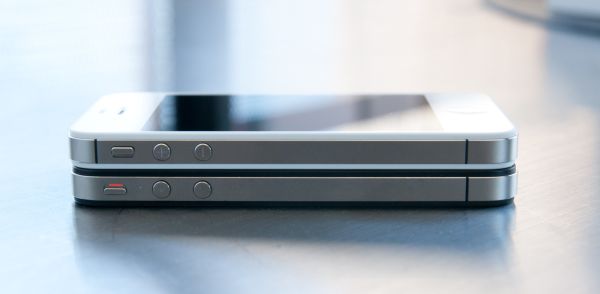
Top: iPhone 4S, Bottom: iPhone 4
The long and short of this change is that the notches have been moved around to accommodate a design with two cellular antennas. One is up at the very top, the other is at the very bottom - the two are the small U shaped portions. The result of this change is that the 4S has a very symmetrical design, as opposed to the GSM/UMTS 4’s asymmetric layout.
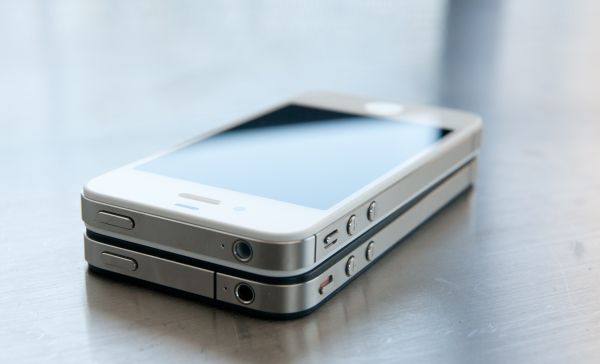 Top: iPhone 4S, Bottom: iPhone 4
Top: iPhone 4S, Bottom: iPhone 4
Just like the CDMA iPhone 4, the 4S also moves the vibrate/lock switch down the device just slightly to accommodate the new break for the top antenna band. This is the physical change that breaks compatibility with cases designed for the older GSM/UMTS iPhone 4. If you recall previously, however, Apple refreshed its bumpers with a new “Universal” line around the time of the CDMA iPhone 4 launch. At that time, case makers also followed suit with a larger vibrate/lock switch port. The result is that if you have a “universal” case created after the launch of the CDMA iPhone 4, you likely won’t need a new one for the 4S.
I say likely because some cases that cover the front of the 4S and are universal might not work as well owing to a small change in the placement of the 4S’ ambient light sensor. It’s going to be a case by case basis to determine which 4 cases that cover the front of the display work with the 4S.
The rest of the 4S exterior is superficially identical to its predecessor, which has become something of a point of contention for shoppers who like being able to identify themselves as owning a 4S, as opposed to a 4. There are, however, subtle differences you can leverage to tell the 4S from its two 4 brethren. The 4S includes the regulatory (FCC, recycling, European Conformity, e.t.c.) logos below its model numbers and FCC ID. The CDMA 4 doesn’t include those logos. Again, the GSM/UMTS 4 is alone with its three-notch stainless steel bands. It is admittedly curious that Apple hasn’t decided to make some other larger change to distinguish the 4S from the other two - there’s no mention of 4S anywhere on the phone. The iPhone 3G and 3GS were famously distinguished from each other by the inclusion of chrome iconography on the back. I fully expect Apple to update their identifying iPhone page with basically the above information at some point in time, but to say that the 4S is identical to the previous device is disingenuous.
The 4S design is without a doubt, however, an evolution of the CDMA iPhone 4’s design. Like the latter, the 4S includes the same improved vibration unit instead of the counterweight vibrator that most smartphones include. The result is a virtually silent, completely smooth vibrate, instead of the louder rattle and sharp acceleration that accompanies the counterweight vibration. The result is much less conversation-interrupting noise when the 4S vibrates during a call, and less intrusive notification.
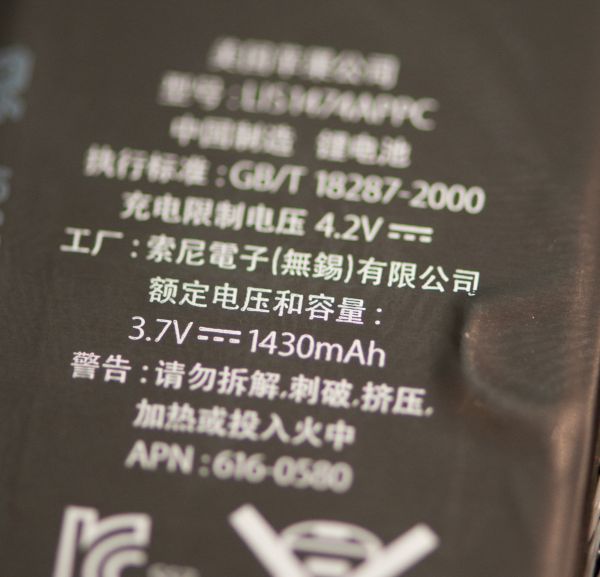
Battery capacity up to 1430 mAh
The other subtle change is an extremely small jump in battery capacity, from 1420 mAh in the 4 to 1430 mAh in the 4S. This is a very small change that boosts the capacity in watt-hours from 5.25 to 5.3. In addition the 4S puts on a little bit of weight, from 137 to 140 grams, but again nothing major.
Even the 4S packaging is basically the same as prior versions, including the same design and contents. Inside you get the phone, dock cable, headset mic, and the same smaller 5V, 1A charger that came with the 4.
| Physical Comparison | |||||||
| Apple iPhone 4 | Apple iPhone 4S | HTC Sensation | Samsung Galaxy Nexus | Samsung Galaxy S 2 | |||
| Height | 115.2 mm (4.5") | 115.2 mm (4.5") | 126.3 mm (4.97") | 135.5 mm | 125.3 mm (4.93") | ||
| Width | 58.6 mm (2.31") | 58.6 mm (2.31") | 65.5 mm (2.58") | 67.9 mm | 66.1 mm (2.60") | ||
| Depth | 9.3 mm ( 0.37") | 9.3 mm ( 0.37") | 11.6 mm (0.46") | 8.94 mm | 8.49 mm (0.33") | ||
| Weight | 137 g (4.8 oz) | 140 g (4.9 oz) | 148 g (5.22 oz) | 135 g | 115 g (4.06 oz) | ||
| CPU | Apple A4 @ ~800MHz Cortex A8 | Apple A5 @ ~800MHz Dual Core Cortex A9 | 1.2 GHz Dual Core Snapdragon MSM8260 | 1.2 GHz TI OMAP 4460 Dual Core Cortex A9 | 1.2 GHz Exynos 4210 Dual Core Cortex A9 | ||
| GPU | PowerVR SGX 535 | PowerVR SGX 543MP2 | Adreno 220 | PowerVR SGX 540 | ARM Mali-400 | ||
| RAM | 512MB LPDDR1-400 | 512MB LPDDR2-800 | 768 MB LPDDR2 | 1GB LPDDR2 | 1 GB LPDDR2 | ||
| NAND | 16GB or 32GB integrated | 16GB, 32GB or 64GB integrated | 4 GB NAND with 8 GB microSD Class 4 preinstalled | 16GB or 32GB NAND integrated | 16 GB NAND with up to 32 GB microSD | ||
| Camera | 5MP with LED Flash + Front Facing Camera | 8MP with LED Flash + Front Facing Camera | 8 MP AF/Dual LED flash, VGA front facing | 5 MP AF with LED flash, 1.3MP front facing | 8 MP AF/LED flash, 2 MP front facing | ||
| Screen | 3.5" 640 x 960 LED backlit LCD | 3.5" 640 x 960 LED backlit LCD | 4.3" 960 x 540 S-LCD | 4.65" 1280 x 720 Super AMOLED | 4.27" 800 x 480 SAMOLED+ | ||
| Battery | Integrated 5.254Whr | Integrated 5.291Whr | Removable 5.62 Whr | Removable 6.475 Whr | Removable 6.11 Whr | ||


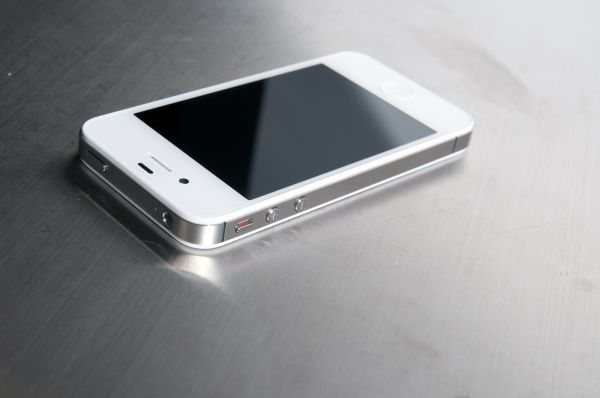

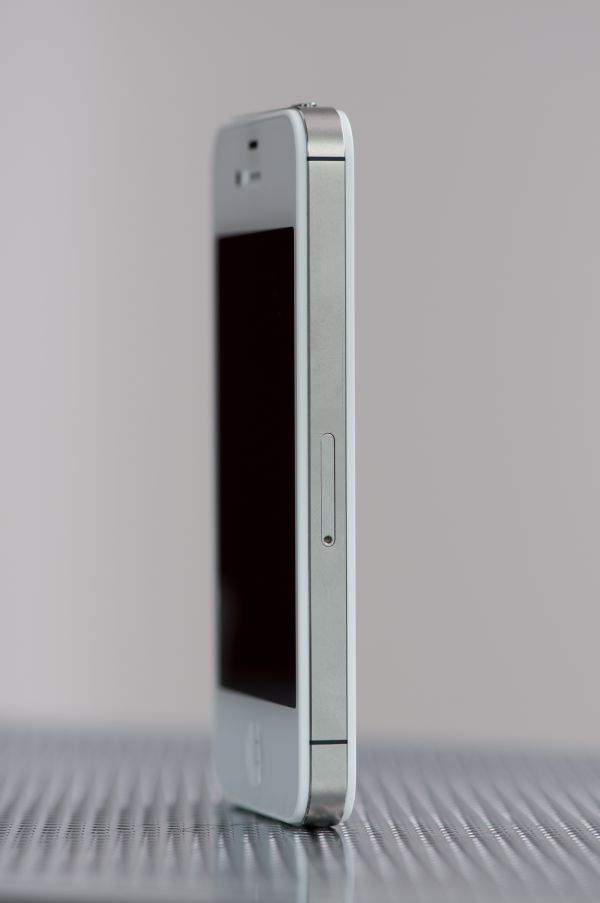














199 Comments
View All Comments
dacramer - Tuesday, November 1, 2011 - link
The browser benchmarks show the 4s as fastest, but this benchmark is FLAWED as a measurement of CPU performance.The benchmark compares Safari to the Android stock browser. The stock Android browser does not support 2 cores, only 1. So all Android dual cores phones would be nearly twice as fast with another browser such as Opera.
I'm surprised Anand did not include this discussion in the review. He seams fixated on the idea that stock to stock browser is a valuable comparison when it totally misleads readers on CPU performance.
Lucian Armasu - Wednesday, November 2, 2011 - link
In case you missed it, the Droid RAZR scored 10% faster than iPhone 4S in the SunSpider test.But yes, this is still mostly a software issue, and I expect the Android 4.0 browser to be even faster on the same chip.
thunng8 - Wednesday, November 2, 2011 - link
FYI, Google says the Galaxy Nexus scores 1983ms in Sunspider running ICSdoobydoo - Wednesday, November 2, 2011 - link
"Where did it show faster CPU?"Where did it in my comment?
Breit - Thursday, November 3, 2011 - link
I just run SunSpider 0.9.1 on my Galaxy S2, international model (everything stock, with Android 2.3.5) and it came in at 1626.5ms with Opera Mobile browser and 3354.8ms with the stock Android browser. So saying the CPU on the Galaxy S2 is weaker than the CPU on the 4S is just not right (and that by a big margin!).At least make comparisons with the best software there is and not just 'some' browser you eventually found on your phone...
I'll bet there is someone programming his own browser just for the kicks or as an exercise for his programming skills and that browser scores over 9000ms in SunSpider. Does that mean the CPU in that phone is slow? ;)
doobydoo - Friday, December 2, 2011 - link
You could achieve the same results on the iPhone too..The comparison is (rightly) comparing stock browser to stock browser, and the iPhone 4S is faster. It would be even faster again using say, Opera.
As for some guy posting 9000ms - you can filter the results to 'best' times so this is a non issue.
Tetracycloide - Tuesday, November 1, 2011 - link
Isn't there more to displays than just white level in nits, black level in nits (on a chart were I can't seem to find the Galaxy S II or the Infuse), and contrast (again, don't see the Samsung Galaxy S II or the Infuse on the contrast chart either)? Don't get me wrong, I don't agree in the slightest with the summary "this is apple cheerleading" but honestly the display comparisons are pretty lacking IMO. Where are the rest of them? There's more to a screen than just nits.medi01 - Thursday, November 3, 2011 - link
Last time iphone disappeared from comparison photo, from the one where it would pale in comparison, when asked, author "explained' that he simply "forgot" it in the pocket. (!!!). Now they didn't even bother. Round of but kissing on "retina" hype and phones disappearing from charts.Find contrast of Galaxy phones on the charts pretty please...
steven75 - Friday, November 11, 2011 - link
Could you be any more of an Fandroid? Seriously.Stuka87 - Tuesday, November 1, 2011 - link
Wait what?Almost every single page has a comparison to Android phones. Several of them have graphs showing the differences!
And your comment on the displays may be your opinion, but actual measurements show otherwise. but hey, if you like your over saturated display with a much lower pixel density, thats your decision.